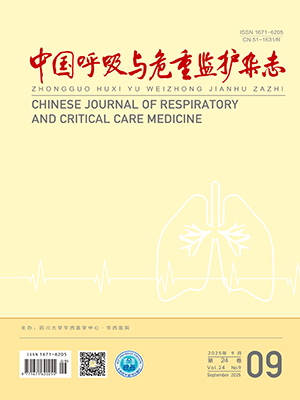Objective To analyze the risk factors for duration of mechanical ventilation in critically ill patients.
Methods Ninety-six patients who received mechanical ventilation from January 2011 to December 2011 in intensive care unit were recruited in the study. The clinical data were collected retrospectively including the general condition, underlying diseases, vital signs before ventilation, laboratory examination, and APACHEⅡ score of the patients, etc. According to ventilation time, the patients were divided into a long-term group ( n = 41) and a short-term group ( n = 55) . Risk factors were screened by univariate analysis, then analyzed by logistic regression method.
Results Univariate analysis revealed that the differences of temperature, respiratory index, PaCO2 , white blood cell count ( WBC) , plasma albumin ( ALB) , blood urea nitrogen ( BUN) , pulmonary artery wedge pressure ( PAWP) , APACHEⅡ, sex, lung infection in X-ray, abdominal distention, and complications between two groups were significant.With logistic multiple regression analysis, the lower level of ALB, higher level of PAWP, lung infection in X-ray, APACHE Ⅱ score, abdominal distention, and complications were independent predictors of long-term mechanical ventilation ( P lt;0. 05) .
Conclusion Early improving the nutritional status and cardiac function, control infection effectively, keep stool patency, and avoid complications may shorten the duration of mechanical ventilation in critically ill patients.
Citation: TONG Xin,ZANG Bin. Risk Factors for Duration of Mechanical Ventilation in Critically Ill Patients. Chinese Journal of Respiratory and Critical Care Medicine, 2012, 11(3): 235-237. doi: Copy
Copyright © the editorial department of Chinese Journal of Respiratory and Critical Care Medicine of West China Medical Publisher. All rights reserved




